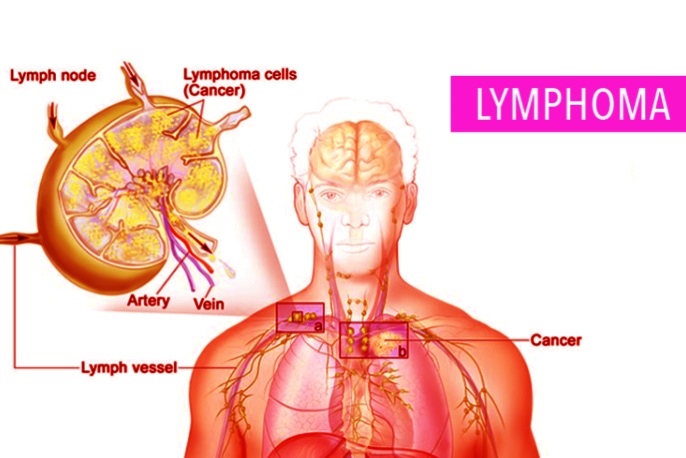Study Warns That Global Incidences of Non-Hodgkin Lymphoma Among Adolescents and Young Adults Are Rising
Nikhil Prasad Fact checked by:Thailand Medical News Team Jan 20, 2025 9 months, 1 week, 4 days, 15 hours, 29 minutes ago
Medical News: Non-Hodgkin lymphoma (NHL) is a cancer originating in the lymphatic system. It accounts for 90% of all malignant lymphomas and remains a significant health concern worldwide. While NHL is more prevalent among older adults, adolescents and young adults (AYAs) aged 15 to 39 years have seen rising incidences in recent decades. This
Medical News report provides a closer look into the findings of a comprehensive study spanning from 1990 to 2021, focusing on NHL’s burden in AYAs.
 Study Warns That Global Incidences of Non-Hodgkin Lymphoma Among Adolescents and Young Adults Are Rising
Study Warns That Global Incidences of Non-Hodgkin Lymphoma Among Adolescents and Young Adults Are Rising
The research team, comprising experts from the International Medical Department at the China-Japan Friendship Hospital, analyzed global trends using the Global Burden of Disease (GBD) database. The study assessed incidence, mortality, and disability-adjusted life years (DALYs) related to NHL, incorporating data from 204 countries, 21 geographic regions, and five socio-demographic index (SDI) tiers. This analysis offers insights into patterns and risk factors, shedding light on the need for targeted strategies.
Key Findings of the Study
-Incidence Rates and Trends
From 1990 to 2021, the global incidence of NHL in AYAs rose significantly. The number of cases grew from 38,339 in 1990 to 63,896 in 2021. The incidence rate also increased from 1.75 per 100,000 to 2.15 per 100,000 people. This upward trend was observed across all SDI regions but was most pronounced in middle and low-middle SDI regions, highlighting disparities in global healthcare.
-Mortality and DALYs
Despite the rise in cases, mortality rates declined slightly during the same period. Deaths attributed to NHL increased from 17,382 in 1990 to 21,225 in 2021, but the mortality rate dropped from 0.79 to 0.71 per 100,000 people. Similarly, DALYs decreased from 49.75 to 44.57 per 100,000. High SDI regions showed the lowest mortality and DALYs rates, reflecting better healthcare access and advanced treatment options.
Regional and Age-Based Insights
-Regional Variations
High SDI regions, including North America and Western Europe, had the highest incidence rates but the lowest mortality and DALYs. Conversely, low SDI regions, such as Sub-Saharan Africa, recorded the highest mortality and DALYs rates. These findings underscore the role of socio-economic factors in disease outcomes.
-Age-Based Observations
Among AYAs, those aged 35 to 39 years bore the highest disease burden, with the greatest incidence, mortality, and DALYs rates. On the other hand, the 15 to 19-year-old group experienced the lowest rates, suggesting age-related vulnerability within the AYA population.
The Role of Risk Factors
The study highlighted high body mass index (BMI) as a leading risk factor contributing to NHL-related deaths and DALYs among AYAs. High BMI was associa
ted with 753 deaths and over 26,000 DALYs globally in 2021. This link is particularly concerning in high SDI regions, where obesity rates are rising.
Obesity’s role in NHL stems from its ability to induce chronic inflammation, disrupt hormonal balance, and impair immune responses. These conditions create an environment conducive to tumor growth and progression. Additionally, individuals with high BMI often face challenges in treatment efficacy and recovery, further exacerbating the disease’s impact.
Global Disparities and EAPC Analysis
The study’s estimated annual percentage change (EAPC) analysis revealed disparities in disease trends. Low SDI regions experienced the largest increases in incidence, mortality, and DALYs, with EAPCs of 1.99, 1.47, and 1.46, respectively. In contrast, high SDI regions showed declines in these metrics, reflecting advancements in healthcare and prevention strategies.
Conclusions and Future Directions
The past three decades have witnessed a rising global incidence of NHL among AYAs, driven by demographic, environmental, and lifestyle factors. While mortality and DALYs have declined, particularly in high SDI regions, significant disparities persist between regions with varying socio-economic development.
To address these challenges, global health initiatives must prioritize:
-Early Detection: Implementing widespread screening programs can aid in early diagnosis, particularly in high-risk age groups.
-Targeted Prevention: Addressing risk factors such as high BMI through public health campaigns can reduce disease burden.
-Equitable Healthcare Access: Bridging the gap in healthcare resources between high and low SDI regions is critical for improving outcomes.
-Research and Data Collection: Continued investment in research, particularly in underrepresented regions, can provide a more comprehensive understanding of NHL’s global impact.
The study findings were published on a preprint server and are currently being peer reviewed.
https://www.researchsquare.com/article/rs-5831900/v1
For the latest Cancer News keep on logging to Thailand
Medical News.
Read Also:
https://www.thailandmedical.news/news/alarming-rise-in-early-onset-colorectal-cancer-mortality-among-young-adults-aged-20-to-44
https://www.thailandmedical.news/news/study-finds-that-millennials-and-gen-x-are-at-higher-risk-for-17-types-of-cancer-unlike-generations-before-them
https://www.thailandmedical.news/news/medical-news-portugal-based-data-consultancy-publishes-report-warning-about-rising-incidences-of-malignant-neoplasms-in-united-kingdom-s-young-adults
https://www.thailandmedical.news/news/more-millennials-and-gen-zers-developing-colorectal-cancer-and-dying-young
https://www.thailandmedical.news/news/breast-cancer-rates-rising-among-younger-women
https://www.thailandmedical.news/news/various-peer-reviewed-published-studies-and-case-reports-show-that-mrna-covid-19-vaccines-can-cause-lymphoma
https://www.thailandmedical.news/news/another-new-study-confirms-radiation-from-ct-scans-linked-to-increased-risk-of-cancer
